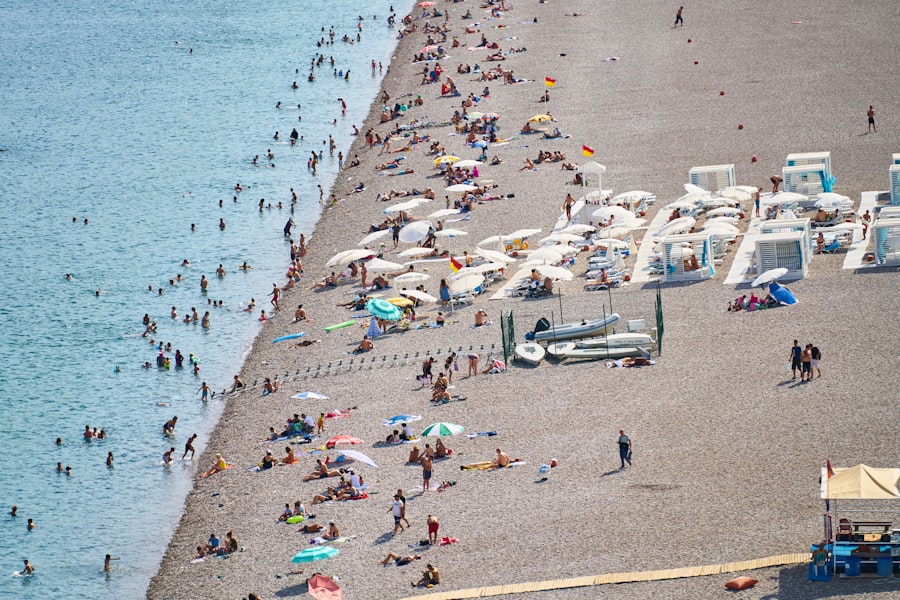Planning a trip is an exhilarating process that sets the stage for the adventures to come. The first step in this journey is thorough research, which involves understanding your destination’s culture, climate, and attractions. For instance, if you are heading to Japan during cherry blossom season, knowing the best viewing spots and local festivals can enhance your experience significantly.
Websites, travel blogs, and forums like TripAdvisor or Lonely Planet can provide invaluable insights into what to expect. Additionally, reading about local customs and etiquette can help you navigate social interactions more smoothly, ensuring that you are respectful and aware of cultural nuances. Preparation goes hand in hand with research.
This includes not only booking flights and accommodations but also organizing your itinerary. A well-structured plan can help you maximize your time and minimize stress. Consider creating a flexible schedule that allows for spontaneous exploration while ensuring you don’t miss out on must-see attractions.
For example, if you’re visiting Paris, you might want to allocate specific days for museums like the Louvre or the Musée d’Orsay while leaving evenings open for leisurely strolls along the Seine or discovering hidden cafés. Moreover, it’s wise to familiarize yourself with local transportation options, such as metro systems or bus routes, which can save you time and money once you arrive.
Key Takeaways
- Research and plan your trip thoroughly to make the most of your time and budget.
- Pack light and bring essentials like a universal adapter, comfortable shoes, and a reusable water bottle.
- Use reliable transportation options and stay aware of your surroundings to navigate a new city safely.
- Seek out local recommendations and avoid tourist traps to have authentic experiences.
- Learn basic phrases in the local language and use translation apps to overcome language barriers.
- Keep important documents and emergency contacts handy to handle unexpected situations abroad.
- Respect local customs and traditions, and be mindful of cultural differences during your trip.
- Embrace mishaps as learning experiences and reflect on your trip to make the most of it.
Packing Essentials: What to Bring and What to Leave Behind
Packing for a trip can often feel overwhelming, especially when trying to balance practicality with personal style. The key is to focus on essentials that will serve multiple purposes. For instance, a lightweight, packable rain jacket can be a lifesaver in unpredictable weather while also serving as a windbreaker during cooler evenings.
When selecting clothing, consider the climate of your destination and the activities you plan to engage in. If hiking is on your agenda, sturdy shoes and moisture-wicking fabrics are crucial. Conversely, if you’re visiting a city known for its nightlife, packing a couple of versatile outfits that can transition from day to night is advisable.
Equally important is knowing what not to bring. Overpacking can lead to unnecessary stress and inconvenience, especially when navigating public transport or checking into hotels with limited space. Avoid bringing items that are easily accessible at your destination, such as toiletries or basic clothing staples.
Instead, focus on unique items that reflect your personal style or serve specific needs during your travels. For example, if you’re traveling to a country where modesty is valued, consider packing clothing that aligns with local customs while still allowing you to express yourself. Additionally, remember to leave behind valuable jewelry or electronics that could attract unwanted attention.
Navigating a New City: Tips for Getting Around Safely

Once you arrive at your destination, understanding how to navigate the city safely becomes paramount. Familiarizing yourself with local transportation options is essential; this may include subways, buses, trams, or even bike-sharing programs. Many cities offer apps that provide real-time information on public transport schedules and routes, making it easier to plan your journeys.
For example, in cities like London or New York, using an Oyster card or MetroCard can streamline your travel experience and save you money compared to purchasing single tickets. Safety should always be a priority when exploring a new city. It’s advisable to stay aware of your surroundings and avoid displaying valuables such as expensive cameras or smartphones in crowded areas.
Researching neighborhoods before venturing out can also help you identify which areas are safe for tourists and which ones to avoid after dark. Additionally, consider downloading offline maps or travel apps that allow you to navigate without relying on data or Wi-Fi. This can be particularly useful in areas where connectivity is spotty or when you find yourself lost in unfamiliar streets.
Avoiding Tourist Traps: How to Find Authentic Experiences
| Authentic Experience | Tourist Trap |
|---|---|
| Local cuisine at a family-owned restaurant | Overpriced, low-quality food at a crowded tourist spot |
| Exploring off-the-beaten-path neighborhoods | Sticking to popular tourist attractions |
| Attending a traditional cultural festival | Visiting over-commercialized tourist events |
| Staying in a locally-owned guesthouse | Booking a chain hotel in the tourist district |
Tourist traps are often characterized by inflated prices and overcrowded attractions that may not offer an authentic glimpse into local culture. To avoid these pitfalls, it’s beneficial to seek out experiences that are favored by locals rather than those heavily marketed to tourists. Engaging with local communities through platforms like Meetup or Couchsurfing can lead to unique experiences such as home-cooked meals or guided tours by residents who know their city intimately.
Another effective strategy is to explore neighborhoods that are off the beaten path. For instance, instead of visiting the heavily trafficked areas of Barcelona like La Rambla, consider wandering through Gràcia or El Raval, where you can find charming plazas, independent shops, and local eateries that offer a taste of everyday life in the city. Additionally, participating in workshops or classes—such as cooking lessons or artisan crafts—can provide deeper insights into the culture while allowing you to connect with locals on a personal level.
Language Barriers: Overcoming Communication Challenges
Language barriers can pose significant challenges when traveling abroad, but they can also lead to memorable interactions and learning opportunities.
Simple greetings, polite expressions like “please” and “thank you,” and essential questions about directions or menu items can demonstrate respect for the local culture and often elicit warm responses.
In situations where language differences become more pronounced, non-verbal communication can be incredibly effective. Gestures, facial expressions, and even drawing pictures can help convey your message when words fail. Additionally, utilizing translation apps like Google Translate can bridge gaps in communication; many of these apps now offer features that allow you to translate text from images or even engage in real-time conversations with locals.
Embracing these challenges with an open mind can transform potential frustrations into opportunities for connection and understanding.
Dealing with Unexpected Situations: Handling Emergencies Abroad

Traveling often comes with its share of unexpected situations—flight delays, lost luggage, or even health emergencies. Being prepared for these scenarios can alleviate stress and ensure that you handle them effectively when they arise. One of the first steps is to have a comprehensive travel insurance policy that covers medical emergencies, trip cancellations, and lost belongings.
This safety net provides peace of mind and financial protection against unforeseen circumstances. In addition to insurance, it’s crucial to familiarize yourself with local emergency services before your trip. Knowing how to contact local authorities or medical facilities can save valuable time in critical situations.
For instance, if you’re traveling in Europe, understanding how the European emergency number 112 works can be vital in case of an emergency. Furthermore, keeping copies of important documents—such as your passport and travel insurance policy—both digitally and physically can help streamline processes if you need assistance from your embassy or consulate.
Cultural Sensitivity: Respecting Local Customs and Traditions
Cultural sensitivity is an essential aspect of responsible travel that fosters mutual respect between visitors and locals. Understanding local customs and traditions not only enriches your travel experience but also helps avoid unintentional offenses. For example, in many Asian cultures, removing shoes before entering someone’s home is customary; being aware of such practices demonstrates respect for local traditions.
Engaging with local customs also extends to dining etiquette. In countries like Ethiopia, sharing food from a communal plate is a sign of hospitality; participating in this practice can enhance your connection with locals. Similarly, understanding appropriate dress codes—such as wearing modest clothing when visiting religious sites—can show respect for cultural norms while allowing you to immerse yourself more fully in the experience.
Reflecting on Your Experience: Learning from Mishaps and Making the Most of Your Trip
Every travel experience comes with its ups and downs; reflecting on these moments can lead to personal growth and deeper appreciation for the journey undertaken. Mishaps—whether they involve missed connections or cultural misunderstandings—often provide valuable lessons that contribute to future travels. Keeping a travel journal can be an effective way to document these experiences; writing about both the highlights and challenges allows for introspection and helps solidify memories.
Moreover, sharing your experiences with others can foster connections and inspire fellow travelers. Whether through social media platforms or travel blogs, recounting stories of both triumphs and tribulations creates a sense of community among travelers who may face similar challenges. Ultimately, embracing both the good and the bad aspects of travel not only enriches your own journey but also encourages others to approach their adventures with an open heart and mind.
FAQs
What are the signs that a traveler hired the wrong tour guide?
Some signs that a traveler may have hired the wrong tour guide include lack of knowledge about the destination, poor communication skills, unprofessional behavior, and a general feeling of discomfort or unease.
What should a traveler do if they realize they hired the wrong tour guide?
If a traveler realizes they hired the wrong tour guide, they should communicate their concerns with the guide and the tour company. If the issues cannot be resolved, the traveler may need to seek a new guide or tour company.
How can a traveler avoid hiring the wrong tour guide?
Travelers can avoid hiring the wrong tour guide by thoroughly researching tour companies and guides, reading reviews, asking for recommendations, and communicating their expectations and preferences clearly before booking a tour.
What are the potential consequences of hiring the wrong tour guide?
Hiring the wrong tour guide can lead to a disappointing or frustrating travel experience, missed opportunities to learn about the destination, and even safety concerns if the guide is not knowledgeable or professional.
What are some red flags to look out for when hiring a tour guide?
Some red flags to look out for when hiring a tour guide include lack of credentials or certifications, poor communication, negative reviews or feedback from previous clients, and a general lack of enthusiasm or passion for the destination.

